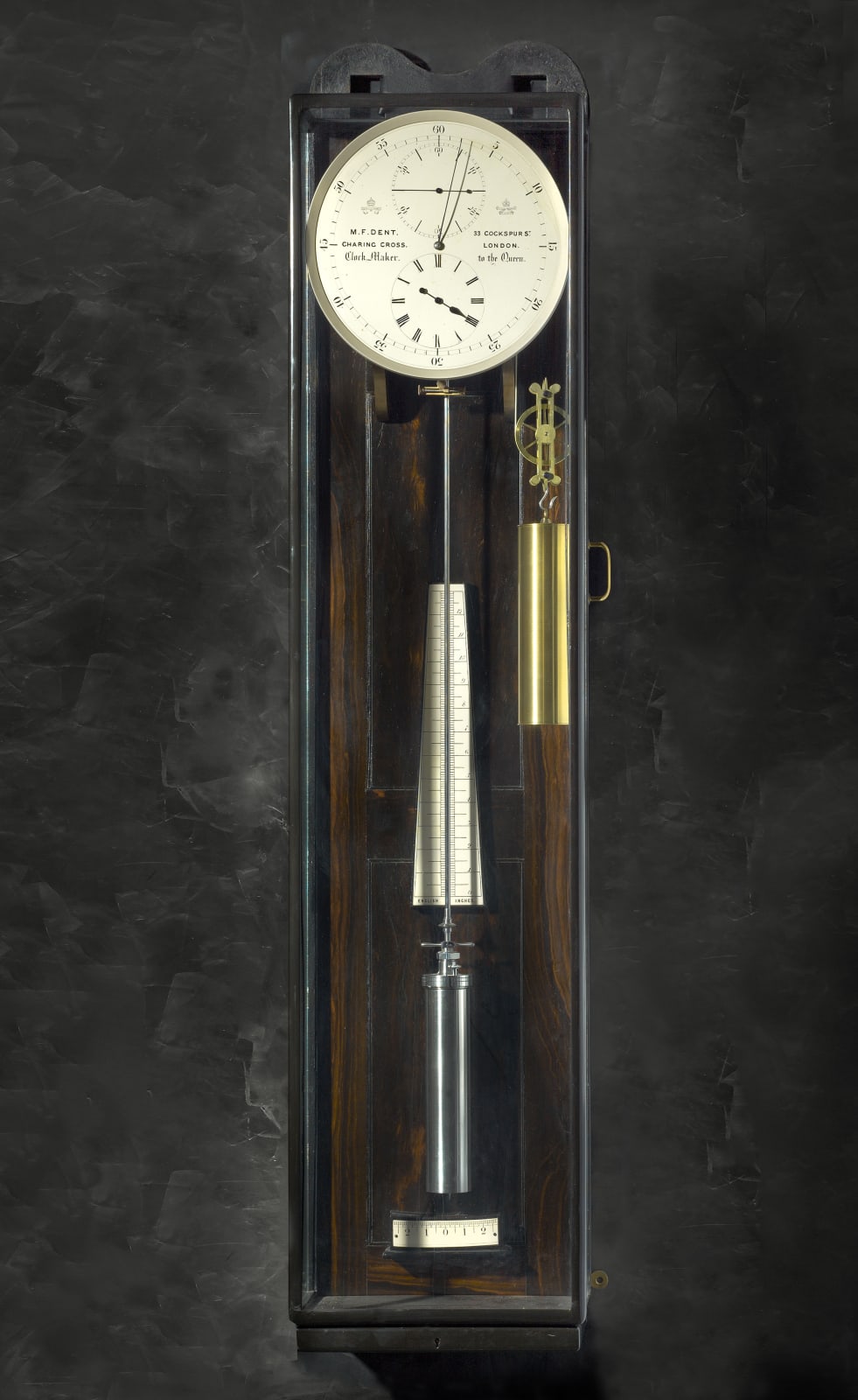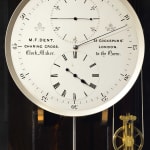A fine English wall regulator by M. F. Dent, 33 Clockspur St. Charing Cross, London, Clock maker to the Queen
London, date circa 1857
EDWARD JOHN DENT (1790-1853). ENGLISH
Edward John Dent was born in London, the son of an officer in the East India Company. He was initially apprenticed to a tallow chandler, but disliking this profession persuaded Richard Rippon (1767-1835), his landlord (and probably his cousin) to instruct him in the manufacture of clocks and watches. Rippon had a well established business in King Street, London, specialising in repeating mechanisms. Dent worked for him from c. 1810 and then on his own account in 1814, during which time he made several lever watches to the designs of Charles MacDowell of Leeds. He also wrote several papers on the chronometer and in 1829 won a First Premium Award for one of his chronometers.
By 1830 Dent had achieved considerable technical ability and business acumen and was ready to enter a partnership agreement of ten years, with John Roger Arnold (d.1843). J. R. Arnold, the son of the leading chronometer maker, John Arnold (1736-99), had succeeded his father's established and reputable firm. In 1830, Arnold Jnr. and Dent moved the business to new premises, at 84 Strand. Together they created some fine chronometers and watches, and also undertook prestigious commissions including the maintenance of Royal Observatory. Their flourishing business was largely on account of Dent's energy and ability. Dent's contract expired in 1840 whereupon he immediately set up his own firm of E. Dent and Co. Ltd. at 82 Strand and soon after at no. 61, taking with him the confidence of most of the customers of his late firm. He also took over Peter Desgrange's shop at 33 Cockspur Street and another inside the Royal Exchange near the entrance to the old Lloyd's building. Dent married Richard Rippon's widow, Elizabeth and on his death the businesses at the Strand and at the Royal Exchange were taken over by his step son, Frederick William Dent (1808-60) and the other in Cockspur Street by another step son. Richard Edward Dent (1817-56).
Dent devoted much of his energy to the compensation of chronometers, establishing a close association with Professor Airy , the Astronomer Royal. On the recommendation of the latter, Dent was selected to provide a clock for the new Royal Exchange, which was fixed in position in 1844. On the strength of this commission, Dent applied to Airy as a candidate to make the new Westminster Tower clock, which he would construct to Airy's instructions. However, Charles Barry, the architect of Westminster Palace (who was to design the clock's hands and dials) favoured the clockmaker, Benjamin Lewis Vuilliamy. After much deliberation, plans and estimates were obtained from Dent, Vuilliamy and Whitehurst of Derby. Dent was eventually selected and in 1852 a contract was signed between him, Airy and Edmund Beckett Denison, a barrister with a particular interest in horology. However Dent died before construction commenced. The contract fell to his step son, Frederick, under the close supervision of Denison. The clock, known by its largest bell as Big Ben was finally set going in May 1859, bearing the inscription "This clock was made in the year of our Lord, 1854 by Frederick Dent of the Strand and Royal Exchange, clockmaker to the Queen, from the design of Edmund Beckett Denison,
Q. C. Fixed here in 1859" However, The words are somewhat misleading for no mention is made of Edward John Dent whose exceptional reputation and ability had initially secured this highly important commission.
Copyright by Richard Redding Antiques, Zürich



